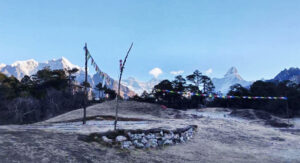A photographer who searches for giant trees has found a 46m red cedar in Canada. The tree is over 5m wide. Since its discovery, it has acquired the nickname of The Wall because of its incredible size.
A wall of wood
TJ Watt hunts for enormous trees to photograph them and protect them. He has photographed thousands of trees but he told CBC News that “no tree has blown me away more than this one. It is literally a wall of wood.”
Watt was on an expedition for National Geographic and the Royal Canadian Geographical Society when he came across the cedar tree on Flores Island, in British Columbia’s Clayoquot Sound. He believes it is at least 1,000 years old. Because of its size and the fact its trunk gets wider with height, it may well have the largest timber volume of any tree in Canada.
Watt and the local Ahousaht First Nation are keeping the location of the tree a secret to help protect it. “These are sensitive areas and everything could get pretty trampled if word got out where to find it,” Watt told the Washington Post.
Local Ahousaht-owned ecotourism companies that usually take visitors to see impressive trees in the area have agreed to keep this one off their tour route.
The tree ranks as the sixth-largest red cedar tree in the country. Watt said that when he first saw the tree, he couldn’t comprehend its size. “From a distance, I thought it had to be two trees because of how wide the trunk and limbs are,” he said. “It defies words.”

Measuring the circumference. Photo: Ancient Forest Alliance
A vanishing species
Logging has destroyed many of the forests where red cedars naturally grow. Now, only a tiny percentage of the original forests exist. Watt is hoping that his work will make people realize that we need to do more to protect them.
This tree’s particular forest is not currently a logging risk, but nor is it on protected land. This is one of the reasons its location is a secret. The Ahousaht First Nation’s Land Use Vision is now in the final stages of negotiation with the government. If successful, the forest will become protected. The Ahousaht are aiming to protect 80% of their territory by declaring them Indigenous Protected and Conservation Areas.

The trunk of the tree. Photo: Ancient Forest Alliance
Tyson Atleo of the Ahousaht Nation, went to see the tree after a call from Watt. “I was assuming it was like many I had experienced across different territories on the island…but this one was obviously quite special. It really does look like a rock wall when you’re hiking up toward it and then you realize it’s a tree. It’s just breathtaking.”
Atleo added: “People would have seen this tree for hundreds of years. My people would have interacted with it for as long as it’s been here.”






